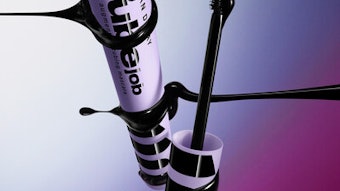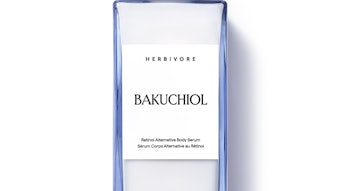With the market for antiaging skin care products expected to grow at a healthy clip over the next few years, it is clear that interest remains strong for products that visibly will reduce the signs of aging. Suppliers and marketers are answering the call with technologically advanced active ingredients incorporated into a broad range of products available across mass and prestige markets.
Behind it all is a growing body of skin science—knowledge that in some cases is radically different from thinking of only a few decades ago—hand in hand with a more educated and sophisticated consumer. There was a time, not so long ago, when scientists thought of the skin as something akin to kitchen plastic wrap, a barrier that let nothing through, and consumers’ idea of advanced skin care was a cleanser followed by a toner.
Peptides and Beyond
Peptides have been the big story in antiaging skin care for a while. These microscopic miracles hold promise for further innovation well into the future. As GCI columnist Steve Herman put it so succinctly in a recent issue, “Humans are mostly water and protein. Proteins are polymers of amino acids, and peptides are short protein chains. Because collagen is a protein, it produces fragments that can trigger a repair mechanism when it breaks down. The goal of advanced skin treatment is to either prevent collagen breakdown or stimulate collagen synthesis.” The smaller peptides replaced other proteins in skin care due to their ability to penetrate the skin and provide real function.
Helen Tarver, No. 7 brand development manager at Boots the Chemist, confirmed her organization’s ongoing interest in peptides, and said it now is looking at taking things a step further. “We have been very interested in peptide technology, and a number of our products are based on peptides. But where it has gotten really interesting has been when we have produced unique combinations of peptides and other actives.” Patents have been applied for on a number of these combinations, centered on skin energizing and skin lightening.
Suppliers predict that peptides with specific structure and function will begin making their way to the marketplace in the near future, and will keep things interesting for some time to come. “Peptides offer the biological specificity to tailor skin care ingredients so that specific mechanisms of activity can be identified and used to approach traditional skin treatment problems in entirely new ways,” said Jon Packer, CEO, Centerchem. “We also have specific peptides for specific end benefits, such as bags under the eyes and dark circles.” Peptides lend themselves to new approaches to treating wrinkles, such as topical wrinkle relaxation.
Packer looks to biotechnology and biofermentation as fertile areas to obtain new raw materials for topical use, and points to currently available treatment materials derived from microalgae grown under controlled conditions. Stimulation of cellular metabolism and wrinkle reduction are some of the benefits offered by these new treatment products. Meanwhile, Tarver and her team are looking beyond lines and wrinkles to other measures of aging skin, and she said they are not alone in this exploration. “I think there is a lot of work across the industry going on around collagen synthesis, given that healthy collagen is the basis of good, supple, firm skin,” she said.
Boom, Not Bubble
The business world learned a painful lesson in the last decade about booms that go bust. The results were dramatic and messy and still are felt today. The scale is clearly not the same, but there is optimism in this industry, with many thinking the antiaging skin care boom will last. “It may not be realistic to expect sustainable growth at as rapid a pace as we have seen the past few years,’ said Centerchem’s Packer, “but I do believe that a larger business base in antiaging skin care is here to stay.”
The growing number of players in the industry along with some interesting new distribution channels certainly has had an impact on the sales of antiaging skin care. Home shopping channels on cable television have launched a number of successful lines, including some that only are available there. Jon Packer thinks many drugstore chains are getting it right in a lot of ways, putting out their own branded products at good value points and greatly increasing the range of products they offer with a lot of emphasis on skin treatment and antiaging products.
Wrinkle Free Future?
Short-term advances are happening rapidly, and Packer points to new types of claims, with improvement in the degree of wrinkle reduction as an example. He sees advances in ingredients that interact with specific cellular receptors or sites that activate or deactivate proteins. Ingredients that signal natural pathways in the skin is another approach of great potential, as are improvements in the texture and overall appearance of the skin and improvements for treating sensitive skin.
Longer term, Packer sees a much wider potential. In no particular order, he predicts better control of oiliness; being able to control pigmentation (darker and lighter); further strides in truly turning back the clock; smoother, firmer, better textured, more youthful-looking skin; greater specificity of active ingredients targeted for specific end benefits and with enhanced delivery/sustained release (longer acting) on the skin. “We should never minimize that better cosmetic effects will be developed, which give immediate visual and tactile benefits to the cosmetic appearance and feel of skin,” said Packer.
Listening to Consumers
So, we know consumers are buying antiaging skin care. But what do we know about what they are really thinking about the products they purchase? Helen Tarver is concerned that some customers are cynical about what they perceive as fake science that shows up in sort of faux-scientific ingredient and product names. She worries that this practice, if allowed to continue, “will turn off a proportion of the consumer population, (that) no longer believe that these things are real.” Others, she said, are always looking for the next magic ingredient in the war against aging. “I think there is a growing polarization between ‘synthetic,’ ‘science-y’ molecules and natural extracts, in terms of their customer appeal.”
Natural ingredients of all kinds certainly do seem to be here to stay. Packer thinks the trend will be in naturals with more activity, that are more standardized, and biotechnology and fermentation, discussed earlier, are areas that will grow.
Veracity is the key for Tarver, whose No. 7 brand carries an ethos of hypoallergenic, non-animal tested or animal derived. “I think my customers are telling me they want truth in products,” she said. “They don’t really care how we deliver it as long as it delivers what we say it will.”
Future Preventive
Research has shown that users of antiaging skin care products are growing younger. The thinking seems to be that if one has to work so hard to get rid of wrinkles once they appear, why not start earlier and work to prevent them in the first place. The idea of preventive skin care is interesting to explore, and no doubt many will. Jon Packer thinks marketers don’t yet see the sizzle in preventive skin care. Consumers also need a lot more education, he said, as many do not yet make the connection between UV insult and skin damage–and preventive products already exist to ward of the effects of sun exposure. Pollution and cigarette smoke are other villains that can, to a great extent, be avoided. And moisturizing is something that everyone can do to keep skin looking healthy and alive.
Still, whether it comes in prevention or repair, one thing seems sure: The future for antiaging active ingredients and skin care will be very bright indeed. n GCISuppliers and marketers are answering the call for new antiaging skin care with technologically advanced active ingredients incorporated into a broad range of products.










